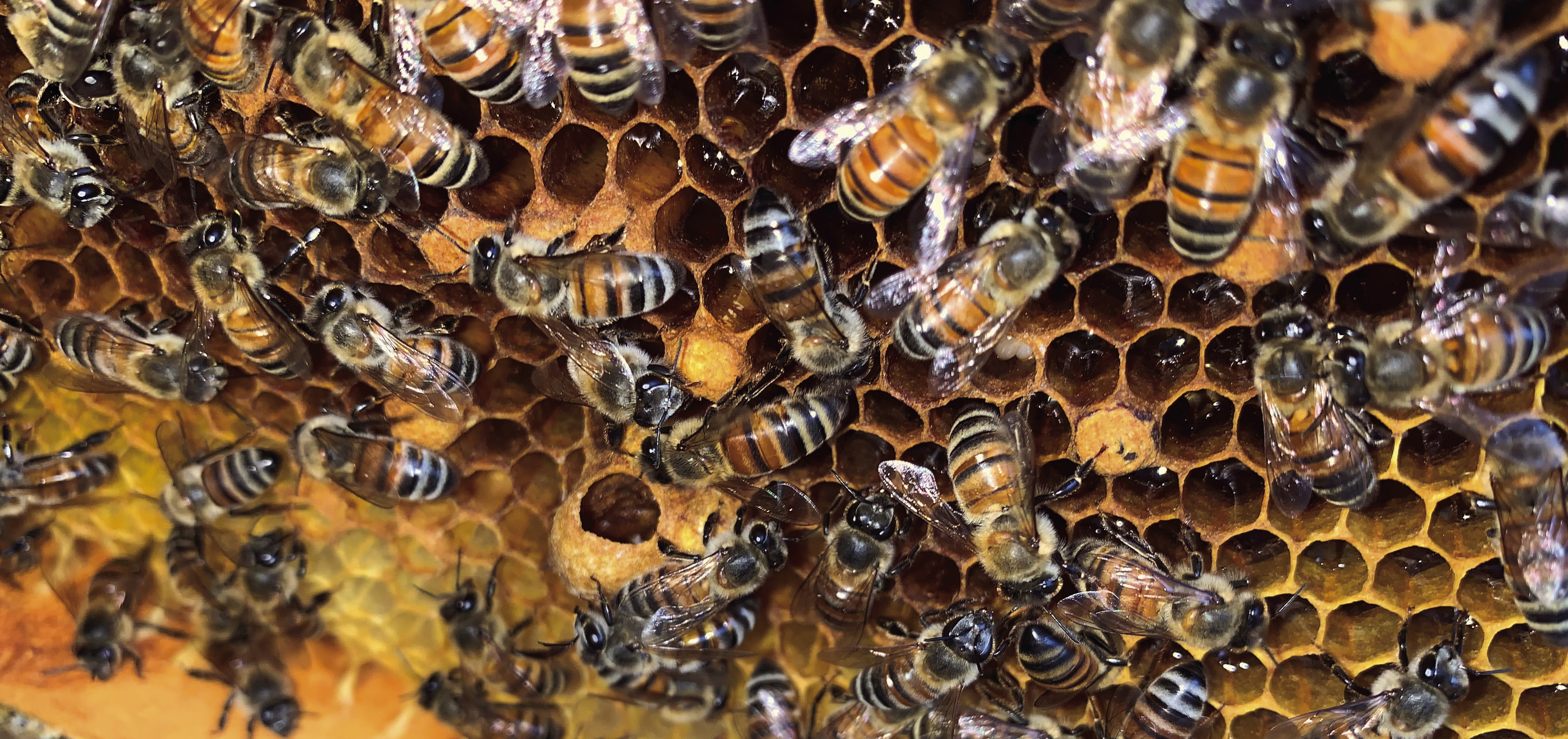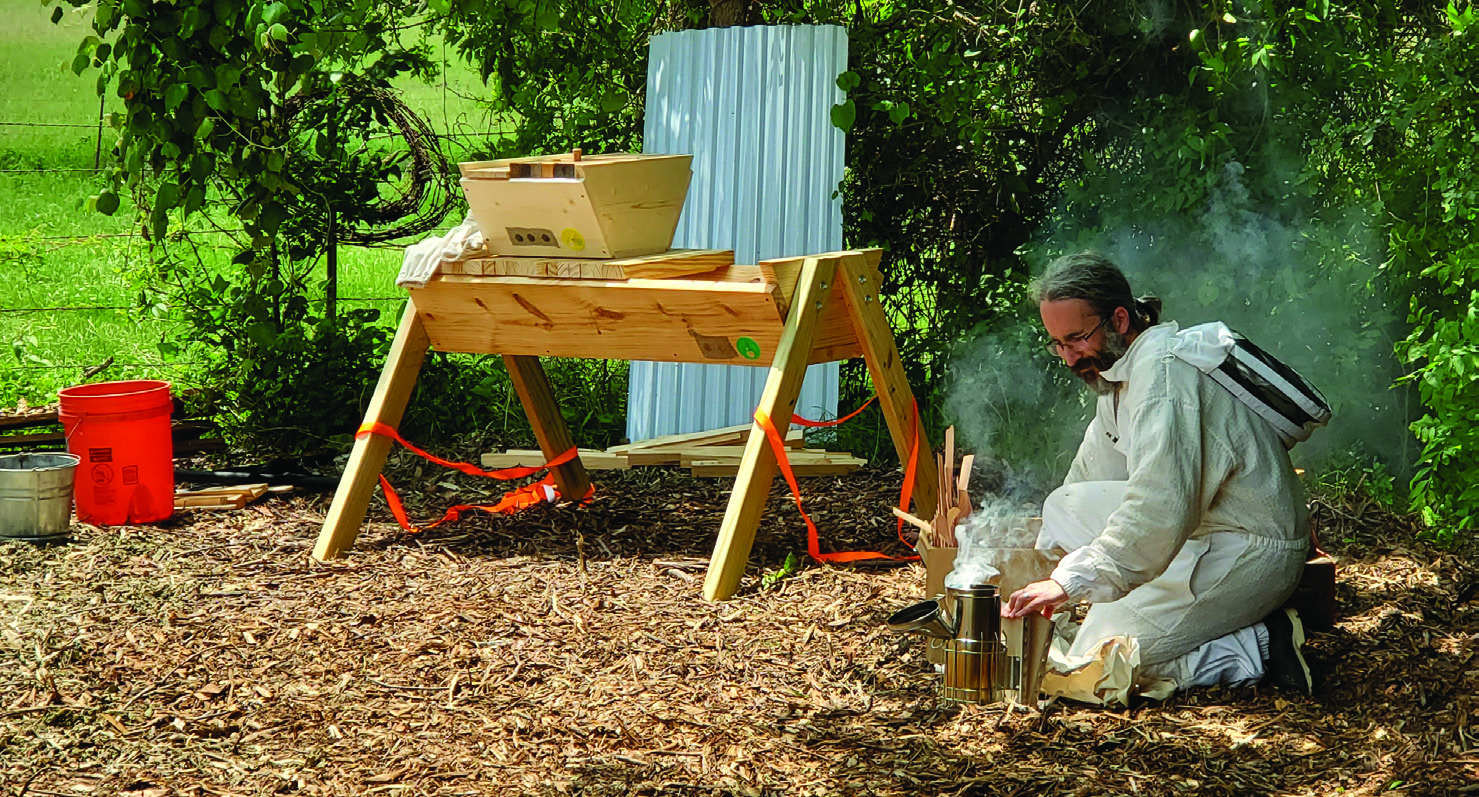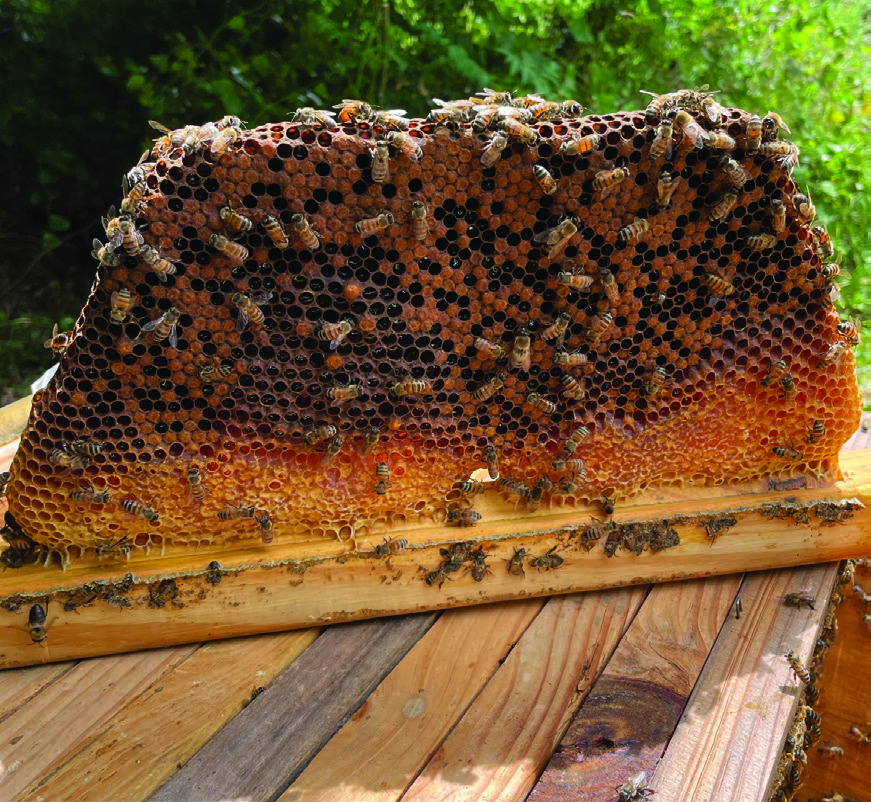TAYLOR — A local beekeeper working hard to keep the winged insects flying and pollinating offers this bit of advice, “Bees don’t need us; we need the bees.”
Pierre Deyris, a natural beekeeper originally from Bordeaux, France, has tended to his hives for the past seven years.
He started beekeeping to reconnect with nature, and added he is committed to raising awareness about the importance of bees and natural beekeeping methods.
Officials said honey from bees and their part in promoting plant and crop growth are crucial to keep the state’s multibillion dollar agribusiness thriving.
However, bees are facing plenty of existential challenges that have put hives at risk including pesticides, drought, habitat encroachment, pollution and changing weather, scientists said.
One recent estimate of an alarming trend indicated nearly half of all bee colonies died in 2023, according to various published reports.
Deyris and other local beekeepers are doing their part to keep the insects alive and well.
BEE BACKGROUND
With 3,500 native bee varieties across the United States and Canada, not everything that buzzes is a pest. Honeybees are pollinating superheroes, gently diving and dancing into flowers across Texas.
According to the Texas Parks and Wildlife Department, there are more than 700 species of native bees in the Lone Star State. However, many of those bees are descended from the European honeybees that colonists brought with them starting in the 1600s.
By the Victorian era, beekeeping had evolved into an industry.
Honeybees are usually good-natured, only stinging when under attack. They are nothing like their hateful cousin, the yellow jacket, which has a taste for meat, likes to sting for sport and is often aggravated by noise and heat.
THE HIVE MIND
Deyris said honeybees live in maternal colonies with the queen and her female workers. A hive’s health is determined by the strength of the queen, especially her egg-production rates.
“The queen drives the mood, the behavior and the success of the hive,” Deyris said.
The queen’s primary role is to lay eggs. When the weather is warm and flowers are plentiful, she can lay over 1,000 a day. There is just one queen per hive and she dines only on royal jelly — a secretion that also feeds larvae. The queen matures in 16 days and grows larger than her worker bees.

The majority of honeybees in a hive are worker bees and they move around doing an assortment of jobs. A worker bee takes 21 days to mature. Early in their lifecycle, the workers clean the hive, then nurse the brood by feeding them.
They are hive architects, building the honeycomb and packing the pollen and nectar in storage cells. Some will guard the hive from predators. The final job of their lifecycle is foraging. The workers gather nectar, water and pollen for the hive’s survival. Pollen is the honeybee’s only source of protein. The average life cycle of the worker bees is 35 days during the summer.
With all the egg-laying, the hive hosts a few drones, or a stinger-less males. If he mates with the queen, he dies. However, the unmated drones are evicted as the queen’s egg production declines when the weather turns colder.
BEES AND THEIR ECONOMIC IMPACT
According to Texas Parks and Wildlife, honeybees might be small, though they contribute $14 billion annually to crop yield and value. They are often referred to as keystone species, vital to the entire system.
State biologists said butterflies and moths might visit flowers for their nectar, but honeybees are better at pollination, which leads to fruit production. With their special pollen-collecting anatomy, bees outperform other insects.
Honeybees pollinate 130 agricultural crops like fruits, fibers, nuts and vegetables.
BEES ON THEIR KNEES
From pesticides and monoculture (or single-crop production) to predators and illness, honeybees face a tough journey. In some years, drought can significantly reduce their food sources. The Texas Apiary Inspection Service, part of Texas A&M Agrilife Research, helps beekeepers by sharing an online diagnostic tool, The Bee MD.
For more, visit https://honeybeelab. tamu.edu/.
Honeybees are a tasty treat for a number of other creatures including hive beetles, wax moths and Varroa mites. Each invades the hive and feasts on everything from pollen and wax to honey stores and even the brood. By laying eggs in the cells of the comb, the parasites reproduce and can kill off a hive, especially if the hive is already weakened.
The Texas Apiary Inspection Service wants to know about these attacks. Reach out to https://txbeeinspection.tamu.edu.
The Asian giant hornet, more commonly known as the murder hornet, flew into Washington state in late 2019, igniting a frenzy not even Stephen King could cultivate. Luckily, it’s not been spotted in Texas yet, but the inspection service wants pictures of any large wasp resembling the flying-bee decapitator (its chosen way to immobilize a hive’s guard bees).

NATURAL BEEKEEPING TO THE RESCUE
Deyris raises bees in harmony with nature, which means he avoids pesticides and uses as little plastic as possible in his hives.
“The less you take care of bees, the more they are thriving,” Deyris said. “I do not treat my bees for mites. I almost never feed my bees.”
He added, “Relax and observe the bees. You need to understand what is going on in your hive.”
He encourages pesticide-free and natural beekeeping practices.
“Doing too much inside the hive, you start imagining issues. It is not good for you and it is not good for the bees,” he said.
With Texas-raised bees, he uses top-bar hives — the most common among beekeepers — that he made in his shop from clean strap wood. With the top-bar hives, his bees make their honeycomb by attaching to the top of each bar. It closely resembles how feral honeybees create hives in the wild.
The top-bar hives resemble logs and not the white boxes that most people are familiar with. He significantly cut his start-up hive costs by using a free plan he downloaded from beemindful.com.
GETTING STARTED IN BEEKEEPING
According to Deyris, joining a club is the best way to get into beekeeping. Most Texas counties offer a beekeeping club through local or regional Texas A&M AgriLife Extension offices.
The Williamson County Area Beekeepers Association in Georgetown offers monthly meetings. With live and Zoom sessions plus a monthly newsletter, the club shares information for new and established beekeepers.
For more, visit www.wcaba.org. The Central Texas Beekeeping Association is based in Washington County and offers monthly meetings. People interested in beekeeping attend its annual bee school.
Held each spring, the eight-hour program introduces participants to the basics. This year’s Beekeeping School is March 2 at Brenham High School, 525 A.H. Ehring Drive in Brenham, and is still open for registration.
Visit www.tinyurl.com/2022BeeSchool, email [email protected] or call 979-277-0411.
The one-day class is $85 with a barbecue lunch and includes speakers and beekeeping vendors.
Deyris is part of the Texas A&M University master beekeeping program. It is a five-year beekeeper training and certification program provided by the Texas Apiary Inspection Service in association with the Texas Beekeepers Association.
As a part of the program, Deyris is a mentor, helping new beekeepers through their first year.

TOP TIPS FOR BEEHIVE SUCCESS
Getting a hive off the ground requires bees and patience.
The single most important factor to growing a hive is the strength of the queen, Deyris said. Finding a reliable supplier is key.
He also advised sourcing Texas-grown honeybees since they are more acclimated to the summer temperatures.
With experience as his guide, Deyris recommends investing in a local nuc, or nucleus colony. Though this option is more expensive, according to Deyris, the hive success rate is higher. The alternative is getting package bees that can be shipped.
To avoid stings, “Don't work your bees at night. Don’t wear black since it is the color of bee predators, like bears and skunks,” Deyris said.
BUZZING AROUND?
For property owners concerned about swarming bees, Deyris will rescue the insects. He gathers them and places them in one of his hives. He also retrieves hives located in outbuildings and outdoors.
He cannot rescue hives located in houses. However, he is connected to local beekeepers in the area who can help.
The best way to reach him is through his website, Pierre Deyris Apiaries at pierredeyris3.wixsite.com.
New for spring, Deyris will be selling nuc colonies to local beekeepers.







Comment
Comments